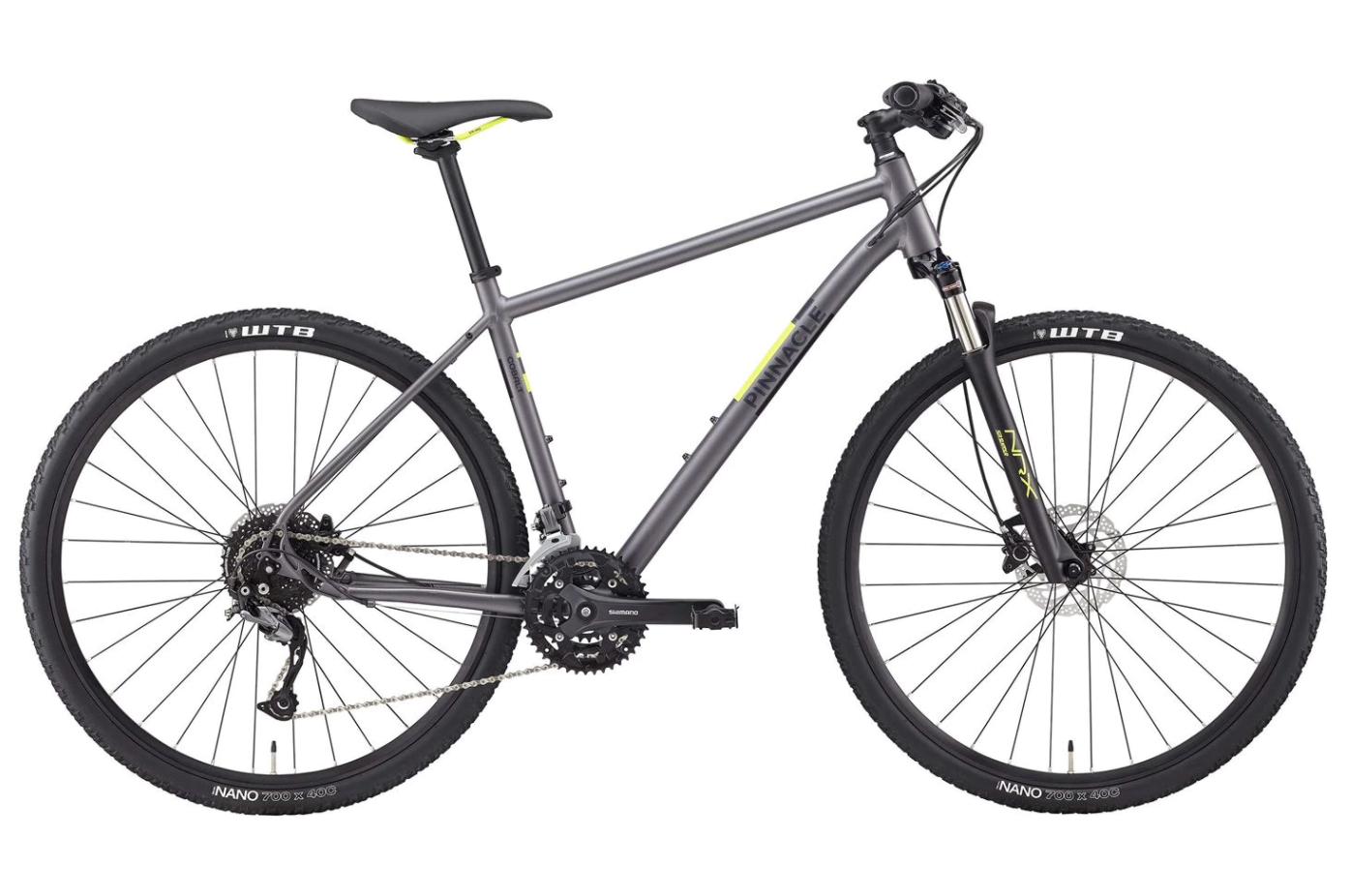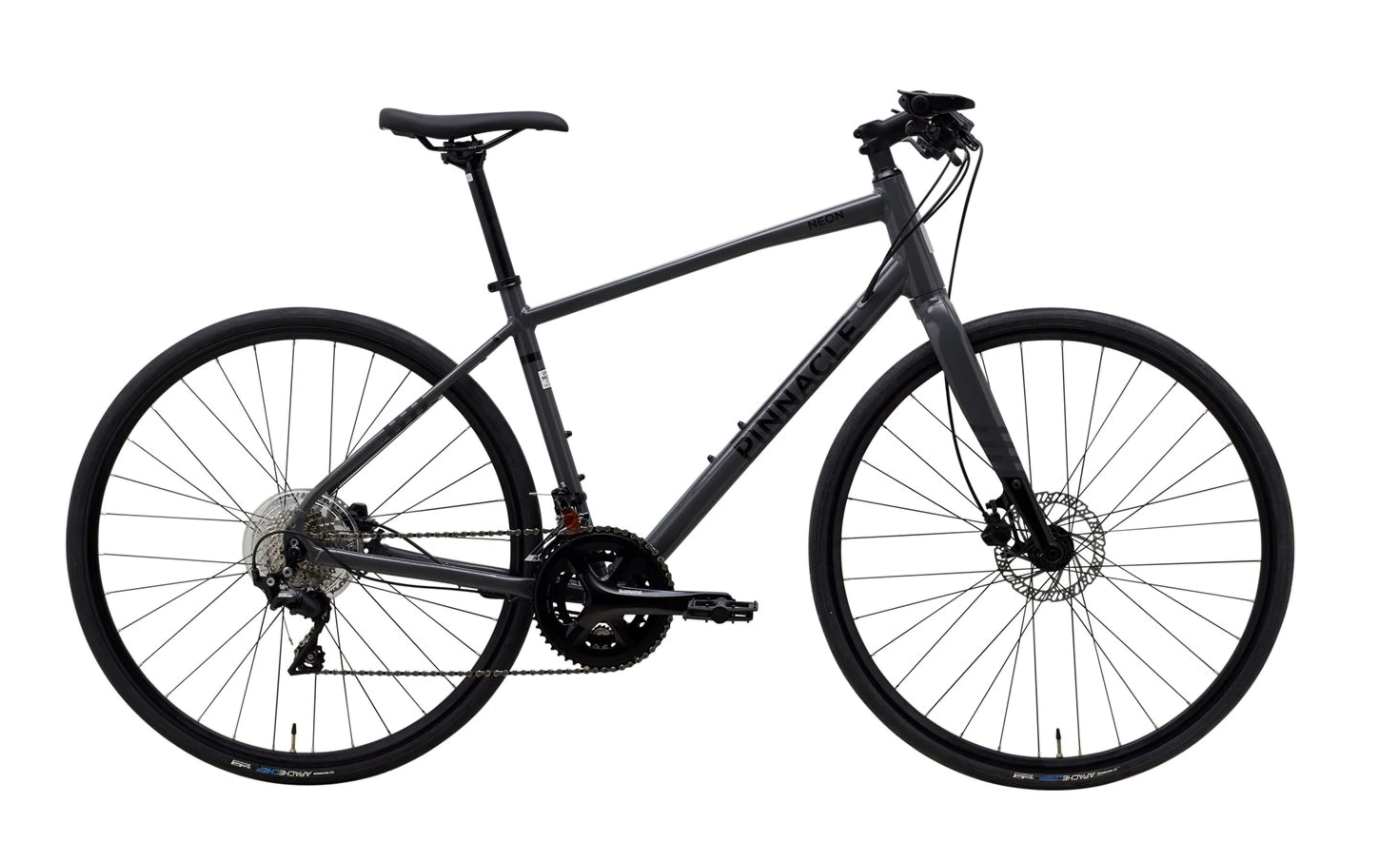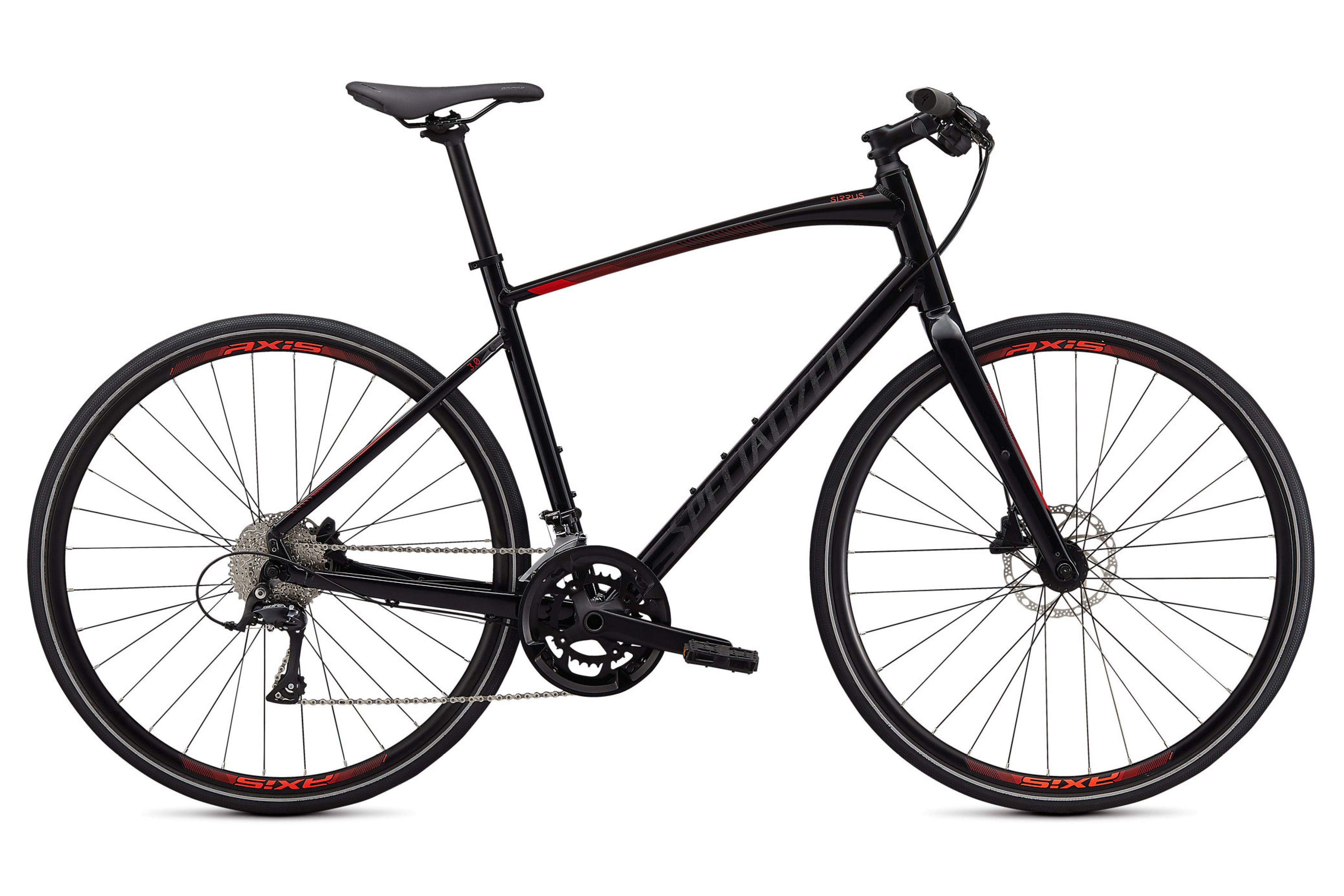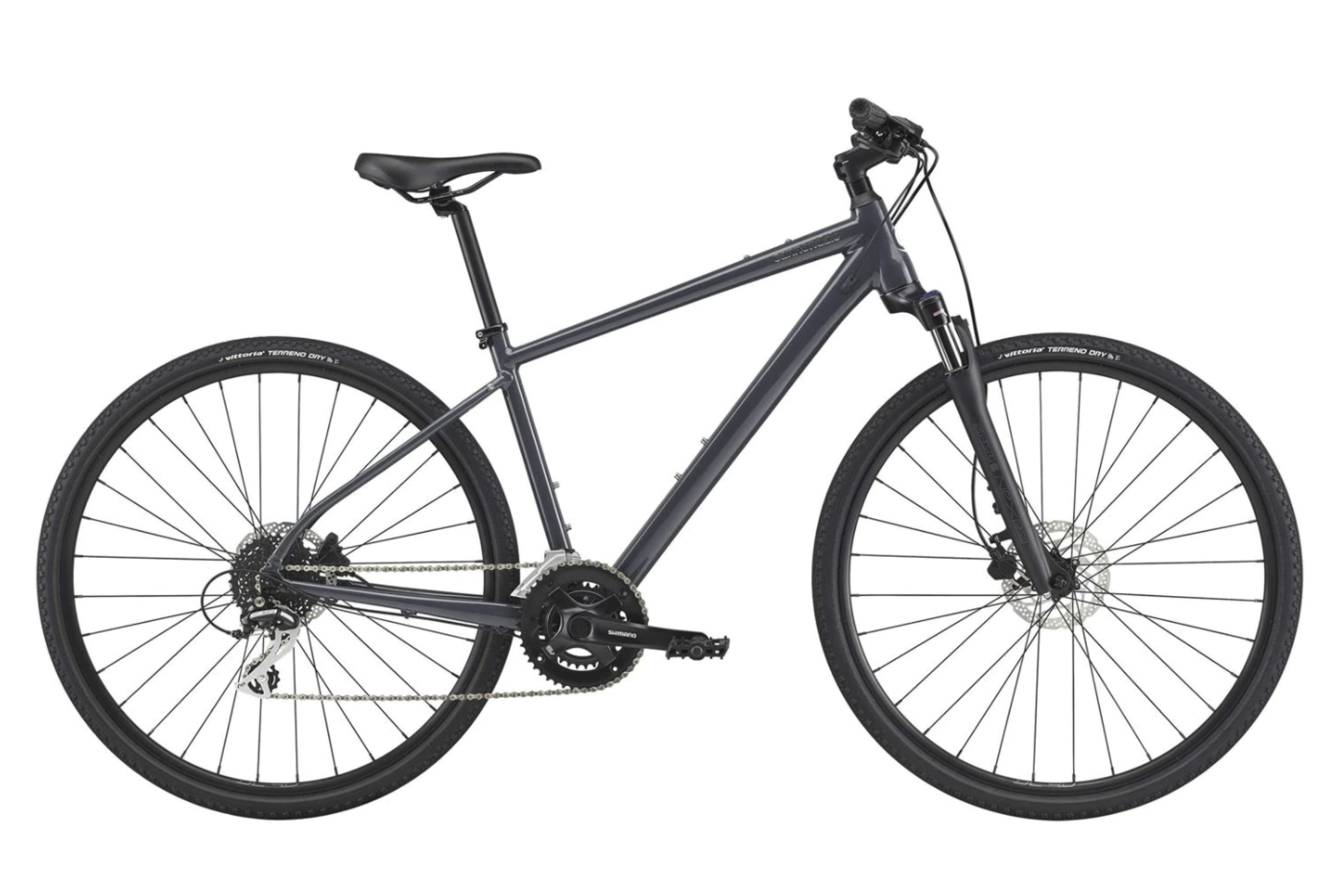What is a hybrid bike and can you use one for a triathlon?
Hybrid bikes are both affordable and accessible, but what exactly are they, and can you use one for a triathlon? We find out...

Hybrid bikes have been a stalwart of cycling for many years thanks to their suitability for commuters or casual riders. But where do they sit in the world of triathlon? What suitable attributes do they have and how will they benefit your training?
Here, Evans Cycles’ Workshop Technical Training Manager Toby Hockley reveals all.
What is a hybrid bike?
There are two ways of looking at a hybrid – it‘s either a more capable (but slower) flat bar road bike or a less capable (but quicker) mountain bike. With their harder wearing tyres (normally between 32-48mm wide) they can handle multiple types of terrain, making light work of pot-holed city roads or rougher paths along canals and bridleways.
They have multiple mounting points for racks and mudguards, which means they can be customised to suit your needs. This is ideal for commuting or cycle touring, as hybrid bikes can be loaded with a great deal of weight.
The geometry of a hybrid puts the rider in a more upright and less aggressive riding position compared to road bikes, with an emphasis on enjoyment rather than outright speed. This means the handling is slightly slower in comparison, but it’ll also be more stable, which is perfect if you’re loading your bike with gear on your way to work.
Hybrid bikes lack the manoeuvrability and playfulness of a purpose-built mountain bike but would still be capable of riding some easy singletrack. Some hybrid bikes come with front suspension, but this tends to be designed more for reducing road buzz through the handlebars and less for tackling root sections at the local bike park.
What components does a hybrid bike use?
Components differ depending on the model, so you could see one, two or even three chainrings at the front combined with a wide range cassette at the rear, giving a huge spread of gears.
Hybrid bikes tend to have their own array of groupsets such as Shimano’s Altus or Acera, which have been designed with an emphasis on being hard working, reliable and durable, rather than performance orientated. These components are also relatively cheap to replace when they eventually wear out, with the only downside being that they’re heavier than road bike components.
For stopping power, we normally see V-brakes on entry level models. These work well in most conditions, but require brake pads being changed frequently, especially when the British weather turns wet and wintery. On higher end bikes we see disc brakes being fitted. These offer much better modulation and more durable pads that are harder wearing, even in the worst conditions.
Can I use a hybrid bike for a triathlon?
In terms of triathlon, if your goal is to finish a race and enjoy the experience without buying a specific bike then a hybrid would work well. They’re enjoyable, comfortable to ride and some can even be relatively fast.
You could also adapt them to be more suitable for racing by adding clip-on tri bars and narrower tyres, both of which will help you become more aerodynamic and reduce rolling resistance.
However, due to the upright characteristics of a hybrid bike, the handling would be compromised and it would be a lot less comfortable. Upgrading the pedals from the basic flat ones to clipless pedals can also improve pedalling dynamics and efficiency, saving valuable seconds in a race.
Where hybrid bikes really excel is in being designed to be ridden day in day out. There’s no better training than just riding your bike, so buying a hybrid bike to commute on will help you get more miles in than you’d expect.
Ultimately, if you’re looking to take on your first triathlon or are racing over short distances, a hybrid bike will be more than capable to get you over the line. But if you want to compete rather than just finish, or move onto longer distance triathlons, you may want to invest in a dedicated road bike or triathlon bike.
Best hybrid bikes for triathlon
If you’re new to cycling or triathlon but don’t want to spend a lot of money on a bike and don’t like the look of drop handlebars, a hybrid bike may be a good choice for you. Below, Toby picks out some of his top recommendations for hybrid bikes.
Pinnacle Cobalt 3

The Pinnacle Cobalt 3 is designed to cover a lot of ground in comfort and aims to make the ‘jack of all trades’ moniker a positive one. It comes with an alloy frame, Shimano’s Alivio M400 groupset (with 27 gears), front suspension, 40mm tyres and hydraulic disc brakes.
On paper, this all looks to add up to a very comfortable ride, while the wide range of gears should ensure you’re covered on both big ascents and descents.
Pinnacle Neon 2

Designed for ‘competitive commuters and fitness fans’, the Pinnacle Neon 2 is likely to be a good option if you’re after a hybrid bike that’s more suited to triathlons.
There’s no front suspension to soak up potholed roads, but the Shimano 105 groupset (with 22 gears), 32mm tyres and hydraulic disc brakes should result in better performance if speed is the aim.
If you want a more road-focused bike but don’t want to commit to drop handlebars yet, this could be a good option.
Specialized Sirrus 3.0

Like the Pinnacle Neon 2, the Specialized Sirrus 3.0 is more of a road-focused hybrid bike that’ll may best suit people looking for performance gains without making the leap to drop handlebars.
It’s fully rigid and uses high-quality components including Shimano’s Sora groupset (18 gears), 32mm tyres and hydraulic disc brakes. Unlike the other bikes in this list, the Sirrus 3.0 also comes with a carbon fork, saving weight in the process.
Cannondale Quick CX

Built to be an urban adventure bike that does it all, the Cannondale Quick CX features an upright, mountain bike-inspired riding position that puts comfort and visibility at its core.
A Shimano Acera groupset offers 16 gears, while front suspension and 40mm tyres should help soak up bumps in the road and on the trail. Hydraulic disc brakes round out the list of key components. There’s also a women’s version available, which you can view here.




